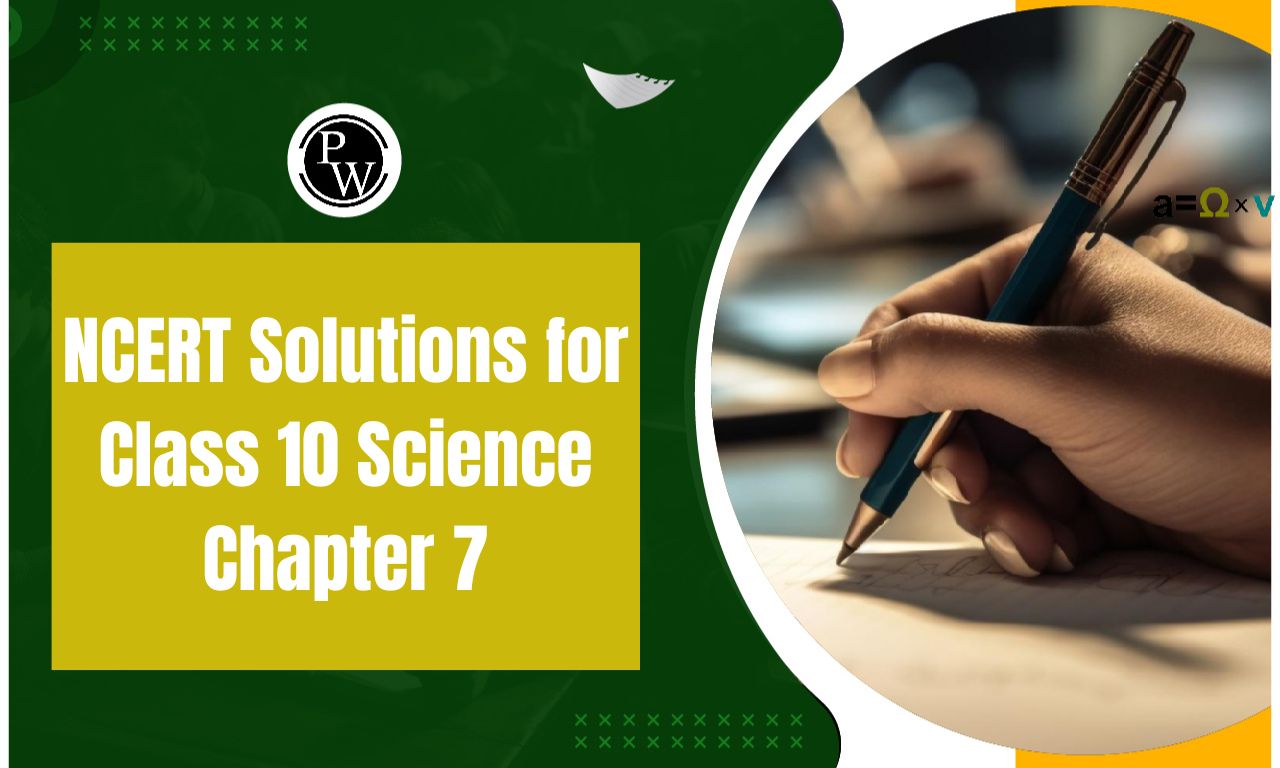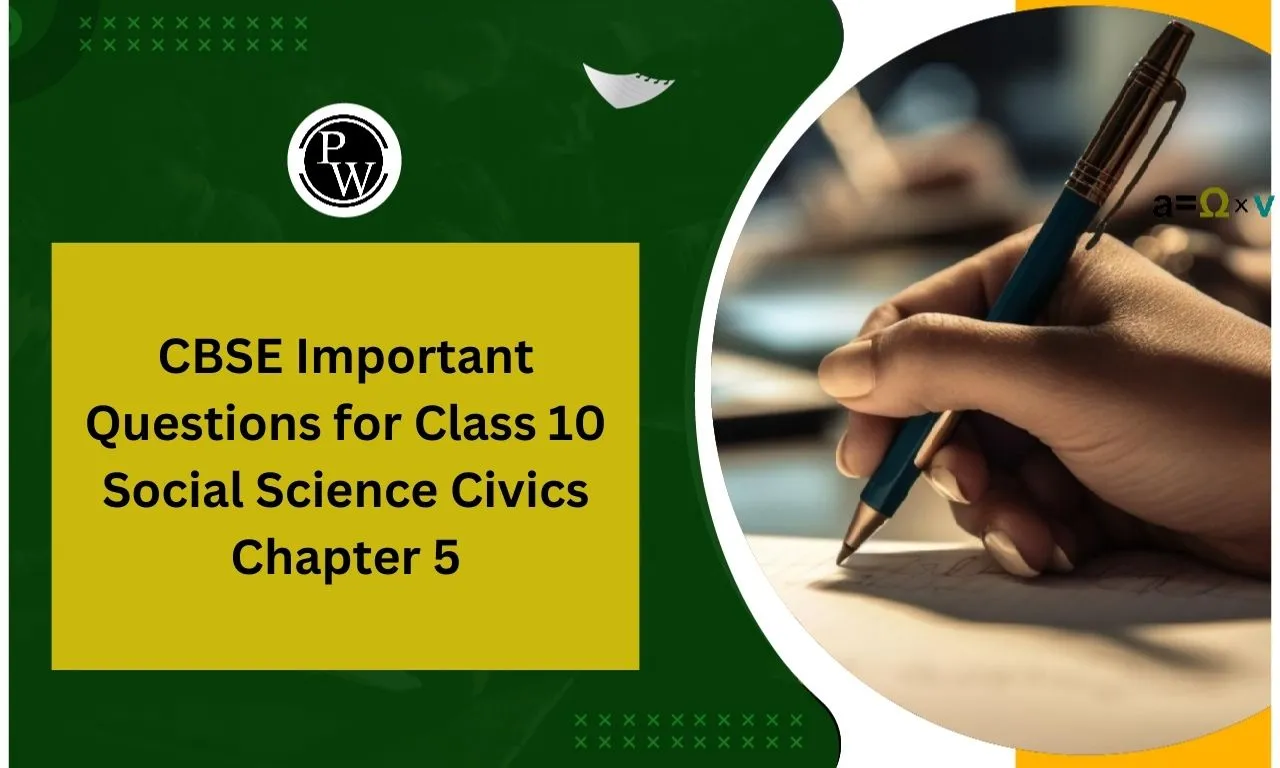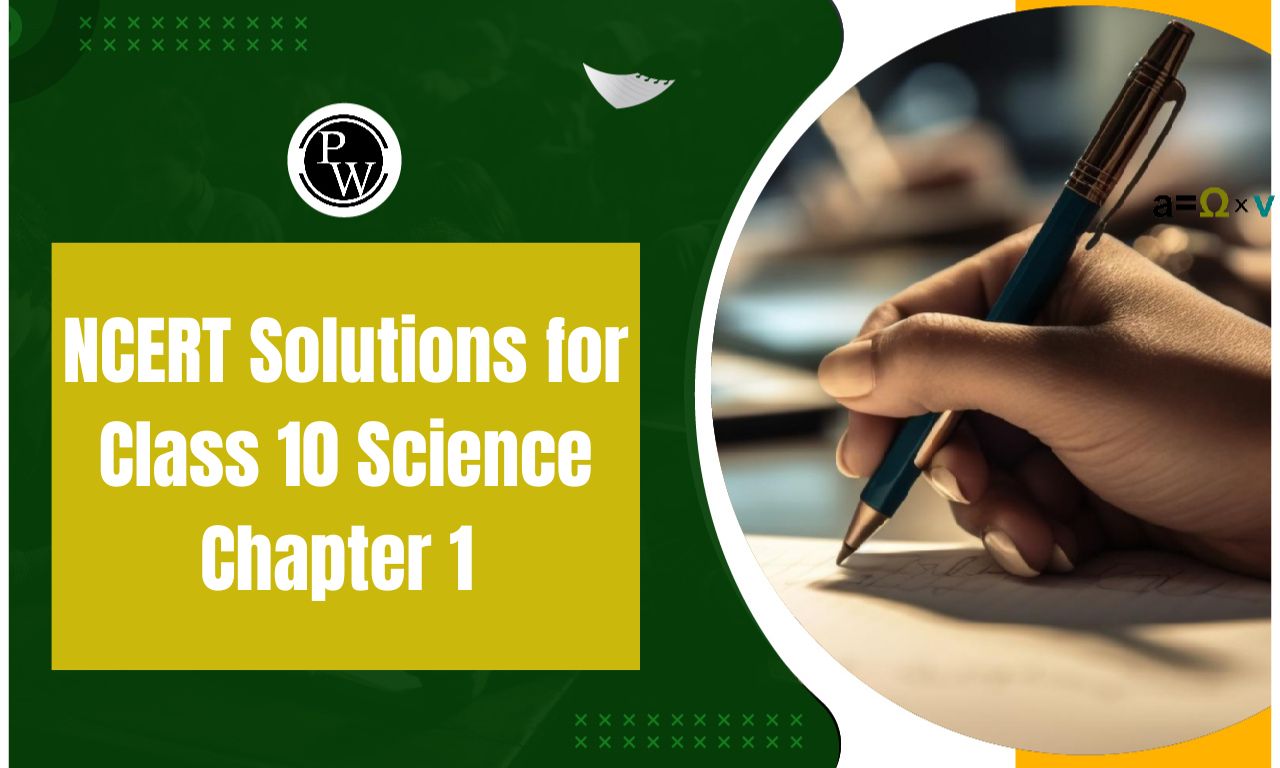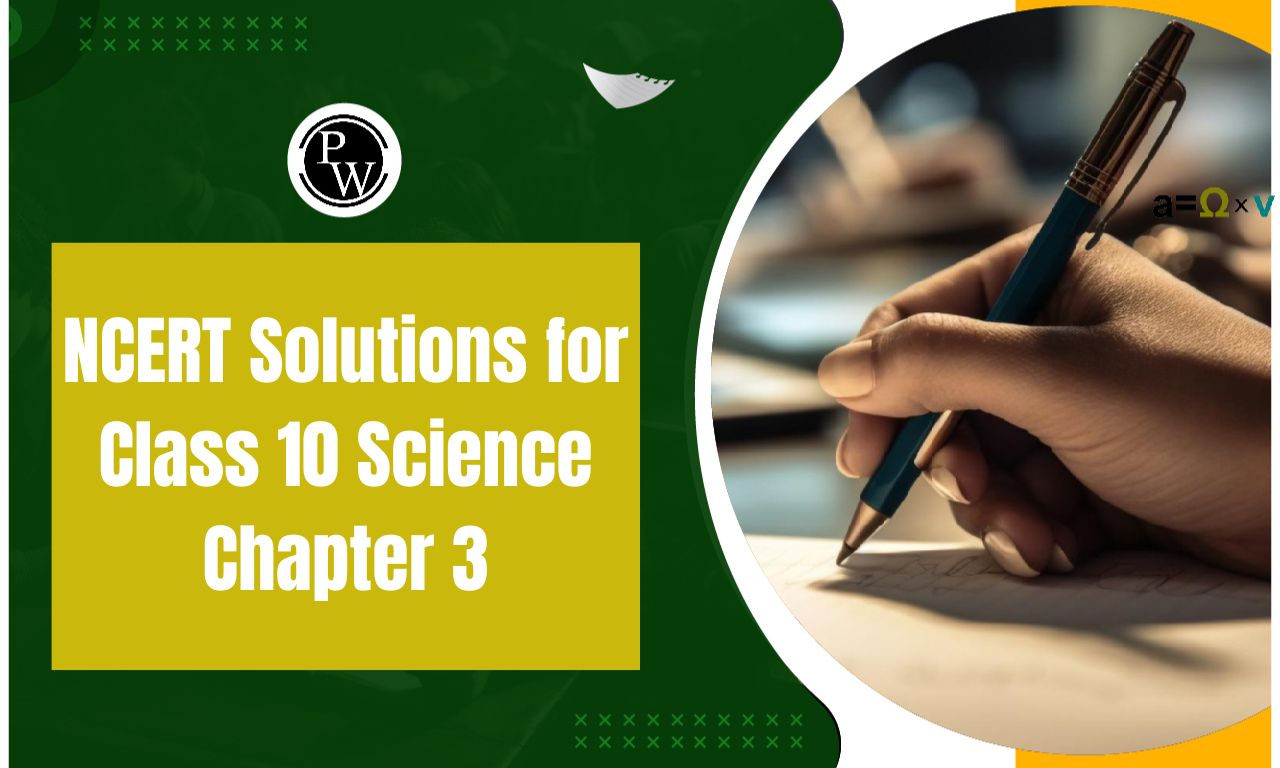
CBSE Class 10 Science Notes Chapter 3 : As students of Class 10, you all might be gearing up for your first board exams now. While the syllabus might seem overwhelming with so much to learn in subjects like Science, staying organized is key to performing your best. This study resource aims to help you do just that by providing a comprehensive set of notes for Chapter 3 - Metals and Non Metals from your Science textbook.
CBSE Class 10 Science Notes Chapter 1
In this chapter, you will be introduced to the fundamental properties of metals and nonmetals along with various interesting reactions that help distinguish one from the other. Our carefully crafted notes have been designed for easy reading and reference so you can grasp even the most complex concepts with clarity and focus on preparing thoroughly. So go ahead, download the PDF and get revising efficiently for your exams with this essential study aid!CBSE Class 10 Science Notes Chapter 3 Overview
Understanding the basic concepts of atoms and molecules, and then explore the different states of matter and their properties. Delve into the topic of chemical reactions and equations, focusing on balancing equations and types of chemical reactions. Lastly, learn about acids, bases, indicators, and pH scale which are important topics for Class 10 Science exams. However, our learning does not end here. As students, it is important to constantly strive for improvement and excellence in our academics. For those seeking additional guidance and resources to ace their exams, I would highly recommend Physics Wallah notes.CBSE Class 10 Science Notes Chapter 2
These notes are not only comprehensive but they are also written in a simple language by expert teachers who have years of experience in teaching CBSE Class 10 Science. With Physics Wallah notes by your side, you can be fully prepared to tackle any question that comes your way. So keep studying with dedication and remember to take regular breaks to rejuvenate your mind. And remember, when it comes to finding the best study materials for Class 10 Science, there is no match for Physics Wallah notes!CBSE Class 10 Science Notes Chapter 3
Here are notes for each main topic in CBSE Class 10 Science Chapter 3: "Metals and Non-Metals":1) Introduction to Metals and Non-Metals:
Definition: Metals and non-metals are two broad categories of elements in the periodic table. These categories are based on the characteristic properties that differentiate the elements. Characteristics of Metals: Metals generally exhibit the following properties:- Luster: Metals have a shiny appearance.
- Conductivity: They conduct heat and electricity.
- Malleability: Metals can be hammered into thin sheets.
- Ductility: They can be drawn into thin wires.
- Dull Appearance: Non-metals lack a shiny appearance.
- Poor Conductors: They are generally poor conductors of heat and electricity.
- Brittle: Non-metals are usually not malleable or ductile.
CBSE Class 10 Science Notes Chapter 3 PDF Download
2) Physical Properties of Metals:
Malleability: Malleability is the property of a material to withstand deformation under compressive stress. In the context of metals, it refers to their ability to be hammered or rolled into thin sheets without breaking. Ductility: Ductility is the property of a material to undergo significant plastic deformation before rupture or breaking. In metals, it refers to their ability to be drawn into thin wires. Conductivity: Metals are good conductors of both heat and electricity due to the presence of free electrons that can move freely. Luster: The shiny appearance of metals, known as luster, is a result of the reflection of light by the metal surface.3) Chemical Properties of Metals:
Reaction with Oxygen: Metals react with oxygen to form metal oxides. The reactivity varies, and some metals may react more vigorously than others. 2Mg+O2→2MgO2Mg+O2→2MgO Reaction with Water: Certain metals react with water to form metal hydroxides and hydrogen gas. 2Na+2H2O→2NaOH+H22Na+2H2O→2NaOH+H2 Reaction with Acids: Metals can react with acids to form metal salts and release hydrogen gas. Zn+2HCl→ZnCl2+H2Zn+2HCl→ZnCl2+H24) Reactivity Series:
Definition: The reactivity series is a list of metals arranged in decreasing order of their reactivity. More reactive metals are placed higher in the series. Applications:- Predicting the outcomes of displacement reactions.
- Understanding the relative reactivity of metals.
5) Formation of Ionic Compounds:
Definition: Ionic compounds are formed by the transfer of electrons between metals and non-metals, resulting in the creation of positively and negatively charged ions. Example: Na+Cl→Na++Cl−Na+Cl→Na++Cl−6) Uses of Metals:
Common Applications:- Iron and steel in construction.
- Aluminum in transportation and packaging.
- Copper in electrical wiring.
7) Alloys:
Definition: Alloys are homogeneous mixtures of two or more elements, with at least one element being a metal. Examples:- Brass: Copper (Cu) and Zinc (Zn)
- Steel: Iron (Fe) and Carbon (C)
8) Corrosion and Its Prevention:
Definition: Corrosion is the gradual deterioration of metals due to chemical reactions with environmental factors, such as moisture and oxygen. Prevention Methods:- Coating with protective layers (painting).
- Galvanization (coating with a layer of zinc).
- Using corrosion-resistant alloys.
9) Introduction to Non-Metals:
Definition: Non-metals are elements that lack the typical properties of metals. They are generally poor conductors of heat and electricity. Examples: Hydrogen (H), Oxygen (O), Nitrogen (N), Carbon (C)10) Physical and Chemical Properties of Non-Metals:
Physical Properties:- Dull appearance.
- Poor conductors of heat and electricity.
- Can exist in different states (solid, liquid, gas).
- React with oxygen to form non-metal oxides.
- React with acids to produce gases.
- Oxygen for respiration.
- Nitrogen in fertilizers.
- Carbon as the basis of organic compounds and fuels.
11) Metalloids:
Definition: Metalloids are elements that exhibit properties of both metals and non-metals. Examples: Silicon (Si), Germanium (Ge) Properties: Metalloids may have intermediate conductivity and other characteristics between metals and non-metals.12) Comparison Between Metals and Non-Metals:
Differentiating Factors:- Physical appearance (shiny vs. dull).
- Conductivity (good vs. poor).
- Malleability and ductility (present vs. absent).
13) Significance of the Periodic Table:
Arrangement: Metals, non-metals, and metalloids are distributed across the periodic table. Understanding their placement aids in predicting their properties and behaviors. These comprehensive notes covers each topic in Chapter 3 of Class 10 Science, providing a detailed understanding of metals and non-metals and their various properties and applications.CBSE Class 10 Science Notes Chapter 3 PDF
Understanding the properties and uses of metals and non-metals is crucial for the CBSE Class 10 Science exam. We have covered various topics such as physical and chemical properties, reactivity series, and extraction of metals in this blog post. It is important to note that while these concepts may seem overwhelming at first, with dedication and proper guidance, anyone can master them. And speaking of guidance, we cannot stress enough the importance of using reliable study materials like the Physics Wallah notes. These notes provide a comprehensive explanation of all topics in an easy-to-understand language along with helpful illustrations and diagrams. So why settle for average notes when you can have the best? As a compassionate blogger, we urge all CBSE Class 10 students to download the Physics Wallah notes for Science Chapter 3 Metals and Non-Metals and give their studies a boost. Remember, hard work coupled with the right resources will surely lead to success!CBSE Class 10 Science Notes Chapter 12
CBSE Class 10 Science Notes Chapter 3 Important Questions
Here are some important questions for CBSE Class 10 Science Chapter 3: "Metals and Non-Metals": 1. Define malleability and ductility. Provide examples of metals that exhibit these properties. Answer: Malleability: Malleability is the property of a material that allows it to be hammered or rolled into thin sheets without breaking. For example, gold and aluminum exhibit high malleability. Ductility: Ductility is the property of a material that allows it to be drawn into thin wires. Examples of metals with high ductility include copper and silver. 2. Explain the term 'reactivity series' and arrange the metals potassium, sodium, calcium, and iron in decreasing order of reactivity. Answer: The reactivity series is a list of metals arranged in decreasing order of their reactivity towards other substances. The order for the given metals is: Potassium (K)>Sodium (Na)>Calcium (Ca)>Iron (Fe)Potassium (K)>Sodium (Na)>Calcium (Ca)>Iron (Fe) 3. Describe the reaction of metals with oxygen, giving examples of metal oxides formed. Answer: Metals react with oxygen to form metal oxides. For example, the reaction of iron with oxygen results in the formation of iron oxide: 4Fe+3O2→2Fe2O34Fe+3O2→2Fe2O3 4. Describe the properties of ionic compounds and their behavior in the molten state. Answer: Ionic compounds have high melting and boiling points, conduct electricity in the molten state, and often have a crystalline structure. As an illustration, ionic compounds like NaCl do not exhibit conductivity in their solid state. However, when these compounds are dissolved in water or in a molten state, they become capable of conducting electricity.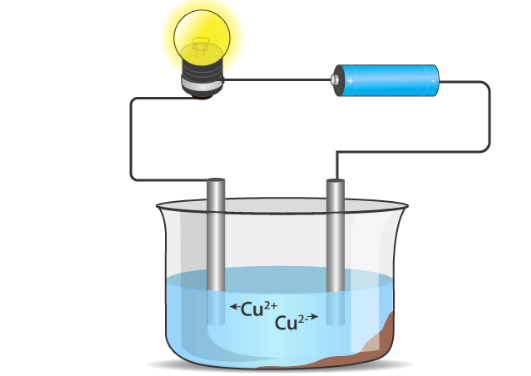 5. State the general equation for the reaction of a metal with dilute hydrochloric acid. Give an example of a metal that reacts vigorously with dilute hydrochloric acid.
Answer:
The general equation for the reaction of a metal with dilute hydrochloric acid is:
Metal+2HCl→Metal chloride+Hydrogen gasMetal+2HCl→Metal chloride+Hydrogen gas
An example of a metal that reacts vigorously with dilute hydrochloric acid is zinc.
6. Explain why sodium and potassium are stored in kerosene oil.
Answer:
Sodium and potassium are highly reactive metals that can react vigorously with air and moisture. Storing them in kerosene oil prevents their contact with atmospheric oxygen and moisture, preventing rapid oxidation.
7. Describe the process of corrosion in metals. Suggest methods to prevent corrosion.
Answer:
Corrosion is the gradual degradation of metals due to their reaction with environmental factors like moisture and oxygen. Methods to prevent corrosion include:
5. State the general equation for the reaction of a metal with dilute hydrochloric acid. Give an example of a metal that reacts vigorously with dilute hydrochloric acid.
Answer:
The general equation for the reaction of a metal with dilute hydrochloric acid is:
Metal+2HCl→Metal chloride+Hydrogen gasMetal+2HCl→Metal chloride+Hydrogen gas
An example of a metal that reacts vigorously with dilute hydrochloric acid is zinc.
6. Explain why sodium and potassium are stored in kerosene oil.
Answer:
Sodium and potassium are highly reactive metals that can react vigorously with air and moisture. Storing them in kerosene oil prevents their contact with atmospheric oxygen and moisture, preventing rapid oxidation.
7. Describe the process of corrosion in metals. Suggest methods to prevent corrosion.
Answer:
Corrosion is the gradual degradation of metals due to their reaction with environmental factors like moisture and oxygen. Methods to prevent corrosion include:
- Applying a protective coating (painting)
- Galvanization (coating with a layer of zinc)
- Using corrosion-resistant alloys
- Ferrous metals: These are metals that contain iron. Examples include iron and steel.
- Non-ferrous metals: These are metals that do not contain iron. Examples include copper, aluminum, and gold.
- Oxygen is essential for respiration.
- Nitrogen is used in fertilizers.
- Carbon is the basis of organic compounds and fuels.
- Metals: Shiny, conductive, malleable, ductile.
- Non-metals: Dull, poor conductors, not malleable or ductile.
CBSE Class 10 Science Notes Chapter 3 Extra Questions
Here are some extra questions for CBSE Class 10 Science Chapter 3: "Metals and Non-Metals" 1. Describe the formation of ionic compounds between metals and non-metals with a suitable example. Answer: Ionic compounds are formed through the transfer of electrons between metals and non-metals, resulting in the formation of positively and negatively charged ions. One example is the formation of sodium chloride (NaCl): 2. Sodium (Na): Sodium is a metal that readily loses one electron to achieve a stable electron configuration. Na → Na ++ e − 3. Chlorine (Cl): Chlorine is a non-metal that readily gains one electron to achieve a stable electron configuration. Cl + e −→ Cl − 4. Combining Ions: The positively charged sodium ion (Na^+) and negatively charged chloride ion (Cl^-) attract each other due to electrostatic forces, forming the ionic compound sodium chloride (NaCl). Na ++ Cl −→ NaCl 2. How are alloys different from pure metals in terms of properties and applications? Answer: Alloys are mixtures of two or more elements, with at least one element being a metal. They differ from pure metals in the following ways:-
Properties:
- Alloys often exhibit enhanced properties compared to pure metals, such as increased strength, hardness, and resistance to corrosion.
- Pure metals may be softer and more susceptible to corrosion.
-
Composition:
- Pure metals consist of only one type of metal atom.
- Alloys consist of a combination of different types of atoms, often including metals and non-metals.
-
Melting Point:
- Alloys may have different melting points compared to pure metals, sometimes higher or lower depending on the specific alloy.
-
Applications:
- Alloys are widely used in various applications where specific properties are required, such as in the automotive industry (e.g., steel), aerospace industry, and construction.
- Pure metals are used when certain properties like conductivity or malleability are crucial, such as in electrical wiring (copper) or jewelry (gold).
- Sodium (Na): Sodium is a highly reactive metal that reacts vigorously with oxygen and moisture in the air. Storing sodium in kerosene oil prevents its immediate reaction with these elements.
- Potassium (K): Similar to sodium, potassium is a highly reactive metal that can react with atmospheric moisture and oxygen. Storing potassium in kerosene oil prevents rapid oxidation.
- Formation of Iron Oxide: Iron reacts with oxygen (from the air) and water to form iron oxide (rust).
- 4Fe+3O2+6H2O→4Fe(OH)34Fe+3O2+6H2O→4Fe(OH)3
- Formation of Rust: The initial product undergoes further oxidation to form hydrated iron(III) oxide, commonly known as rust (Fe2O3·xH2O).
- Weakening: Rust is a porous and flaky material that does not adhere well to the iron surface. This weakens the iron structure over time.
- Disintegration: The expansion of rust can lead to the disintegration of iron structures, causing damage.
- Reduced Strength: The presence of rust reduces the structural integrity and strength of iron.
- Organization: The periodic table organizes elements based on their atomic number, electron configuration, and chemical properties. This organization allows for a systematic study of elements.
- Prediction of Properties: Elements in the same group (vertical column) often exhibit similar chemical properties. The periodic table allows scientists to predict the properties of elements based on their location.
- Identification of Trends: Trends in properties, such as atomic size, electronegativity, and reactivity, can be identified by observing elements across periods (horizontal rows) and down groups.
- Valuable Information: The periodic table provides essential information about each element, including its symbol, atomic number, atomic mass, and electron configuration.
- Basis for Chemical Reactions: Understanding the arrangement of elements in the periodic table is fundamental for predicting and explaining chemical reactions. It helps in identifying trends in reactivity and the formation of compounds.
CBSE Class 10 Science Notes Chapter 3 FAQs
What is the basic difference between metals and non-metals?
Metals are elements that generally have a shiny appearance, conduct electricity, and are malleable and ductile. Non-metals, on the other hand, are generally poor conductors of electricity, not malleable or ductile, and may appear dull.
How are metals and non-metals classified in the periodic table?
In the periodic table, metals are found on the left side, and non-metals are found on the right side. The elements in the middle are known as metalloids.
Provide examples of common metals.
Common metals include iron (Fe), copper (Cu), aluminum (Al), zinc (Zn), and gold (Au).
Give examples of common non-metals.
Common non-metals include oxygen (O), nitrogen (N), carbon (C), sulfur (S), and fluorine (F).
🔥 Trending Blogs
Talk to a counsellorHave doubts? Our support team will be happy to assist you!

Check out these Related Articles
Free Learning Resources
PW Books
Notes (Class 10-12)
PW Study Materials
Notes (Class 6-9)
Ncert Solutions
Govt Exams
Class 6th to 12th Online Courses
Govt Job Exams Courses
UPSC Coaching
Defence Exam Coaching
Gate Exam Coaching
Other Exams
Know about Physics Wallah
Physics Wallah is an Indian edtech platform that provides accessible & comprehensive learning experiences to students from Class 6th to postgraduate level. We also provide extensive NCERT solutions, sample paper, NEET, JEE Mains, BITSAT previous year papers & more such resources to students. Physics Wallah also caters to over 3.5 million registered students and over 78 lakh+ Youtube subscribers with 4.8 rating on its app.
We Stand Out because
We provide students with intensive courses with India’s qualified & experienced faculties & mentors. PW strives to make the learning experience comprehensive and accessible for students of all sections of society. We believe in empowering every single student who couldn't dream of a good career in engineering and medical field earlier.
Our Key Focus Areas
Physics Wallah's main focus is to make the learning experience as economical as possible for all students. With our affordable courses like Lakshya, Udaan and Arjuna and many others, we have been able to provide a platform for lakhs of aspirants. From providing Chemistry, Maths, Physics formula to giving e-books of eminent authors like RD Sharma, RS Aggarwal and Lakhmir Singh, PW focuses on every single student's need for preparation.
What Makes Us Different
Physics Wallah strives to develop a comprehensive pedagogical structure for students, where they get a state-of-the-art learning experience with study material and resources. Apart from catering students preparing for JEE Mains and NEET, PW also provides study material for each state board like Uttar Pradesh, Bihar, and others
Copyright © 2025 Physicswallah Limited All rights reserved.
Get App
